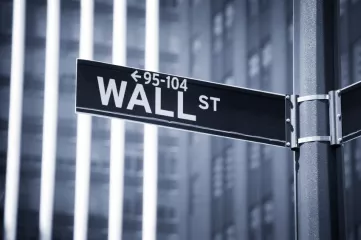- | Financial Markets Financial Markets
- | Expert Commentary Expert Commentary
- |
Dodd-Frank: Two Years Later, Countless Questions Remain
Today marks two years since the passage of the largest piece of financial legislation since the New Deal: the Dodd-Frank Wall Street Reform and Consumer Protection Act. Because many of the rules to implement Dodd-Frank have yet to be written, and others have yet to take effect, the full impact of Dodd-Frank is highly uncertain. Given what we do know, however, it may do more to create future crises than to prevent them.
Today marks two years since the passage of the largest piece of financial legislation since the New Deal: the Dodd-Frank Wall Street Reform and Consumer Protection Act. Because many of the rules to implement Dodd-Frank have yet to be written, and others have yet to take effect, the full impact of Dodd-Frank is highly uncertain. Given what we do know, however, it may do more to create future crises than to prevent them.
First, Dodd-Frank didn’t even attempt to reform the broken housing-finance system. The legislation simply ignored Fannie Mae and Freddie Mac, the flawed government-sponsored mortgage giants at the heart of the housing crisis. Why? The enormous influence that special interest groups such as realtors, homebuilders, housing advocates, and Wall Street firms wield in Washington made seriously tackling this issue politically dangerous. Despite their bravado, that was not a price the drafters of Dodd-Frank were willing to pay.
Second, Dodd-Frank not only failed to solve the problem of “too-big-to fail,” it institutionalizedit. On the most basic level, Dodd-Frank, with its myriad regulatory complexities, gives big banks a competitive edge over their smaller rivals, who can’t afford the lawyers and compliance personnel the law necessitates.
Not only does Dodd-Frank make it tough for small banks to survive, but the law makes it hard for big financial institutions to fail. Dodd-Frank allows the regulators to decide which firms they can’t imagine living without. While there is a high price to pay for getting on the too-big-to-fail list -- more stringent regulation -- once you’re there, the regulators will be your best friends forever. After all, if you fail, it looks as if they’ve failed, right? So, with the additional regulatory burden comes an unspoken commitment that the Federal government (i.e. taxpayers) will step in to save these critically important firms and their creditors if there is trouble. Firms on the list will have an easier time borrowing money and finding business partners than their unimportant competitors.
Third, the authors of Dodd-Frank seem to believe that regulators were resurrected from the crisis as omniscient, infallible, super-humans. Bureaucracies -- from the Securities and Exchange Commission to the Federal Reserve, many of which failed in their oversight roles the last time around -- were given vast new powers. And these powers don’t just affect the core players in the financial system, they also reach Main Street companies that had nothing to do with causing the crisis. Rather than defining these new powers precisely, Congress afforded the regulators tremendous discretion to define the limits of their own authority. In fact, so much of the decision-making was left to regulators that the full implications of the law may not be known for years.
Fourth, rather than simplifying the system in order to enhance regulatory accountability, Dodd-Frank added a host of new bureaucracies to the already crowded stable. These include the Bureau of Consumer Financial Protection, the Financial Stability Oversight Council, and the Office of Financial Research. In a further blow to accountability, these new agencies don’t have to answer to Congress, the President, or the American people.
Finally, Dodd-Frank is a hodge-podge of reforms, many of which had little or nothing to do with the financial crisis. While the law failed even to address many of the fundamental problems that precipitated the financial crisis, it did manage to include half-baked “solutions” to such critical financial issues as regulating conflict minerals and corporate governance at Main Street companies -- items that, interestingly, had been sitting on special interests’ and regulators’ wish lists long before the financial meltdown.
Critics of Dodd-Frank are often impatiently waved off as ill-informed opponents of realfinancial industry reform. But this same impatient unwillingness to consider the implications of countless Dodd-Frank provisions blocked critical assessment of the bill before they became law. As a consequence, Americans who not only lost untold wealth and opportunity, but also were forced to prop up a faulty financial system during the last crisis, may bear the costs of yet another financial calamity sparked by Dodd-Frank. When that occurs, incantations about Dodd-Frank’s power to stop crises will sound a lot less credible.
